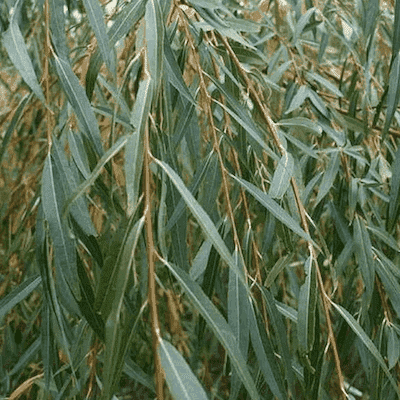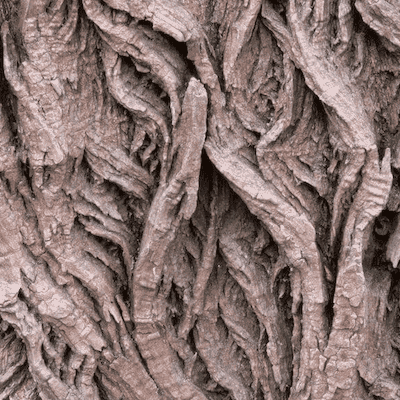Softwoods
A forest is a carbon bank, every tree a deposit.
Willow trees are versatile, fast-growing species native to wetlands and riparian areas, but they can thrive in a variety of soils and climates. They offer a wide range of applications, including:
Willow trees are recognized for their characteristic hanging branches that create a sweeping, inverted half-circle canopy. They are commonly found along riverbanks, lake shores, and wetlands, where they play a vital role in regulating water tables. Due to their high water demand, willow trees are unsuitable for low-rainfall climates.
With a growth rate of about 3 feet of branch growth annually, willows are naturally short-trunked due to early branching close to the ground. While not inherently suited for commercial timber production, specific cultivation techniques can make willows viable for high-quality wood production.
In commercial plantations, tree species are selected to produce long sawlogs for pole wood and milling. Willow’s excellent workability and attractive light-to-dark stain appearance make it a desirable choice. Plantations thrive in water-rich environments, such as wetlands, offering a cost-effective option for cultivation. Willow seedlings are inexpensive, and seeds are easy to germinate and establish in water-soaked soils.
Regular pruning is essential for cultivating long, branch-free willow sawlogs. Each spring, lateral branches are removed from the main vertical stem, leaving a slender "whip" to grow throughout the season. This pruning process continues annually for five years or until the tree reaches a height of 20 feet. Over time, these whips develop into tall, straight sawlogs with impressive trunk diameters and clear wood.
White willow is the preferred species for timber production due to its superior qualities. Managed correctly, willow plantations can yield high-quality timber while capitalizing on the natural growth characteristics of this remarkable tree.
Willow trees hold immense potential as a source of biomass, particularly for manufacturing wood pellets used in energy production. Willow biomass is considered climate neutral, meaning it functions more like grass than a traditional carbon-emitting tree when burned for fuel. This carbon-neutral characteristic makes willow biomass highly valuable for industrial carbon credits, a key component for polluting industries aiming to reduce their tax liabilities.
Known for their rapid growth, willow trees thrive in water-rich environments. For biomass production, willows are left unpruned and harvested every 3 to 5 years. Their exceptional coppicing ability allows them to regenerate quickly, with up to 10 new shoots sprouting from each cut stump. These stump sprouts grow even faster than the original tree, sometimes reaching heights of 6 feet or more in a single season, ensuring a consistent and sustainable harvest.
Willow trees are among the most effective coppicing species, with the ability to produce multiple fast-growing shoots from a single stump after each harvest. This process dramatically increases biomass yields—up to 10 times the original volume—and shortens subsequent harvest cycles by a year. Unlike traditional plantations that require wide spacing to grow large trunk wood, willow biomass plantations are planted densely, with trees spaced about 5 feet apart. This high-density planting creates a thick, almost impenetrable hedge ideal for maximum biomass production.
Weeping willow is the preferred species for biomass production due to its superior coppicing and growth characteristics, making it a practical and efficient choice for timber and energy applications.
Willow trees are poised to become an industry favorite beacuse you only nned to plant once and harvest for life!
Willow trees are highly effective for land reclamation, especially in low-lying wetlands or areas of little agricultural value. Their high water consumption can lower water tables by several feet, reclaiming portions of land for farming. With extensive root systems, they stabilize slopes along washouts, ravines, and riverbanks. Willow trees also rebuild ecosystems rapidly, often within three years, while their roots extract toxins, including heavy metals, from water and soil, storing these pollutants in the wood.
Willows are particularly useful in restoring degraded lands, such as old mine tailings, open-pit excavations, or areas disturbed by human activity. Their ability to filter pollutants makes them ideal for detoxifying contaminated soil and water. Additionally, after floods or fires, willows help stabilize soil, prevent erosion, and restore vegetation, creating habitat and food sources for various species in a short time.
Willow trees are a versatile choice for land reclamation projects, thriving in poor or contaminated soils while offering quick establishment, ecosystem restoration, and habitat creation.
Willow trees are an excellent choice for windbreaks, as they significantly reduce wind speeds—by up to 70%—protecting crops, livestock, buildings, and homes from wind damage. They are particularly effective in areas with strong prevailing winds.
Willow windbreaks also provide additional benefits. Secondary plants, such as berry bushes, can be planted between rows, creating a diverse and productive landscape that benefits both wildlife and humans. In regions with heavy snowfall, willow windbreaks reduce drifting snow, minimizing damage to crops and preventing road blockages.
Adaptable to a wide range of soils and climates, willow trees are a reliable option for windbreaks anywhere in the country, providing both practical and ecological benefits.
Willow wood has been used medicinally for centuries, with indigenous peoples relying on its bark, which contains salicin—a compound similar to aspirin—for pain relief. Willow bark is still used by herbalists today to treat headaches, muscle pain, joint pain, and fevers.
In addition to its analgesic properties, willow bark is antiseptic and antifungal, making it a natural remedy for infections and skin conditions. Its long history of medicinal use underscores its versatility and value as a natural resource.
Willow wood plantations offer a unique opportunity to create additional revenue streams. Pruned branches, too small for pellet production, can be used for their medicinal properties. Harvesting and processing willow bark for medicinal purposes not only maximizes the tree’s potential but also provides a secondary income source for timber investments.
Willow wood is a soft, lightweight material with a straight grain and a pale yellow to white hue. Known for its remarkable flexibility, it is widely used in crafting baskets, furniture, and other woven or bentwood items. Additionally, it is a popular choice for carving, turning, and various woodworking projects that require ease of manipulation.
Although not particularly hard or durable, willow wood’s flexibility and workability make it ideal for indoor applications. It is less suited for outdoor use or situations requiring significant strength or long-term durability, as it lacks the resilience of harder woods.
Abundant and widely available, willow wood is a cost-effective choice for commercial uses such as furniture production, basket weaving, and general woodworking. Its affordability and versatility also make it a favorite among DIY enthusiasts and hobbyist woodworkers for a wide range of projects.
Softwoods, the pioneer species of the temperate forest, grow quickly to leave their mark on the landscape for centuries.
Partner with us in a land management project to repurpose agricultural lands into appreciating tree assets. We have partnered with growingtogive.org, a 501c3 nonprofit, to create tree planting partnerships with land donors.
We have partnered with growingtogive.org, a Washington State nonprofit to create a land and tree partnership program that repurposes agricultural land into appreciating tree assets.
The program utilizes privately owned land to plant trees that would benefit both the landowner and the environment.
If you have 100 acres or more of flat, fallow farmland and would like to plant trees, then we would like to talk to you. There are no costs to enter the program. You own the land; you own the trees we plant for free and there are no restrictions; you can sell or transfer the land with the trees anytime.
Copyright © All rights reserved Tree Plantation


